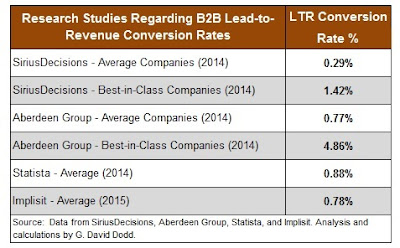By now, just about everyone involved in B2B marketing is aware of the hype surrounding account-based marketing (ABM). Many thought leaders argue that ABM is the "next big thing" in B2B marketing, and recent research confirms that the enthusiasm for account-based marketing is strong and growing.
- In the 2015 State of Account Based Marketing Survey by SiriusDecisions, 92% of respondents said that ABM is "extremely" or "very" important to their overall marketing efforts.
- In Demand Metric's 2015 Account-Based Marketing Adoption study, 71% of survey respondents said they are interested in adopting ABM, are testing it, or are already using it.
According to users, account-based marketing provides several important benefits. In the Demand Metric study, the four top benefits identified by ABM users were:
- Increased engagement with target accounts (83% of users)
- Better sales/marketing alignment (69%)
- Better qualified prospects (66%)
- Greater understanding of program performance (59%)
These benefits are important, but at a more basic level, the most significant potential benefit of ABM is a more productive B2B demand generation system. As Demand Metric wrote, "It [ABM] allows marketing and sales to target the accounts they value most, including prospects, current customers and partners. This precise approach to targeting helps bring the right accounts to the table, making the marketing and sales process more efficient." (Emphasis in original)
There's no doubt that demand generation productivity needs improvement. Several research studies have found that the demand generation system in many B2B companies is horribly inefficient. Specifically, these studies have shown that the overall lead-to-revenue (LTR) conversion rate in the average B2B company is extremely low. And even top-performing B2B companies don't have LTR conversion rates that are all that impressive. The following table shows the results of these research studies.
A well-designed and well-executed ABM program should improve demand generation productivity by significantly increasing a company's LTR conversion rate. In the Demand Metric research, 43% of experienced ABM users said that account-based marketing had a positive impact on all stages of the demand generation funnel.
To illustrate how ABM can impact the LTR conversion rate, take a look at the following table. This table shows the lead stage conversion rates published by SiriusDecisions for average and best-in-class B2B companies. Notice that the lowest rate in both cases is for the conversion from inquiry to marketing qualified lead (MQL).
When a company implements account-based marketing, it targets most of its marketing programs at relevant individuals who are affiliated with specified accounts. Therefore, virtually all of the responses or "inquiries" produced by those programs will, by definition, be marketing qualified leads. As a result, the inquiry to MQL conversion rate will be extremely high.
If an average B2B company increases its inquiry to MQL conversion rate to 80%, its overall LTR conversion rate will increase from 0.29% to 5.3%, even if all of the other intermediate conversion rates remain unchanged. Under the same circumstances, a best-in-class company would improve its LTR conversion rate from 1.42% to 10.2%. These increases represent an 18X improvement in demand generation productivity for an average B2B company and a 7X improvement for a best-in-class company.
For the past several years, thought leaders have argued that B2B marketers should focus more on lead quality and less on lead quantity. This change in focus is a natural consequence of using account-based marketing, and the resulting productivity improvements are impressive.
Top illustration courtesy of Richard Matthews via Flickr CC.
Top illustration courtesy of Richard Matthews via Flickr CC.







Great piece. Is there a Linkedin share button?
ReplyDelete